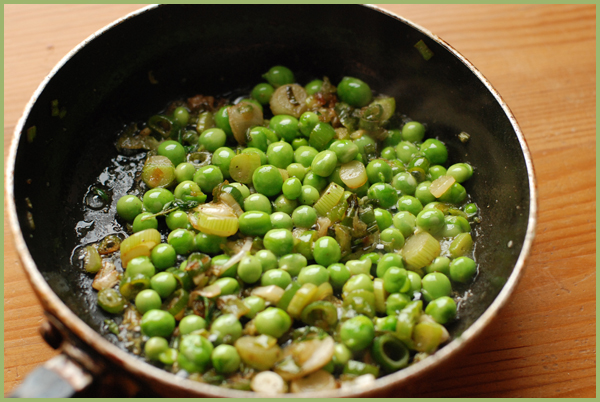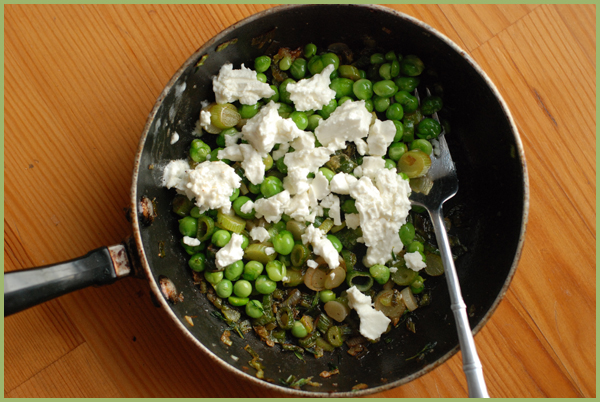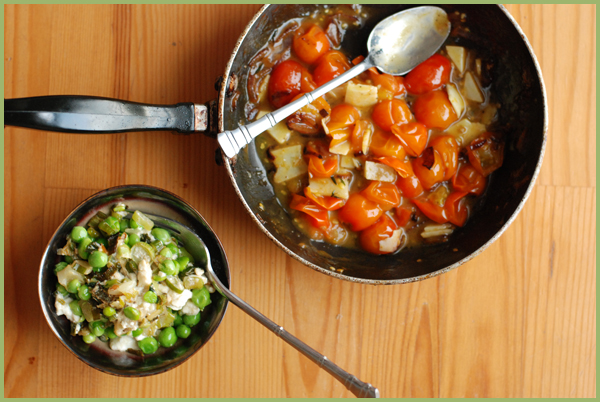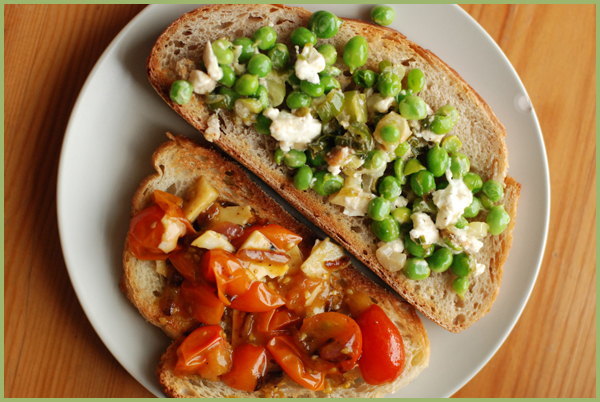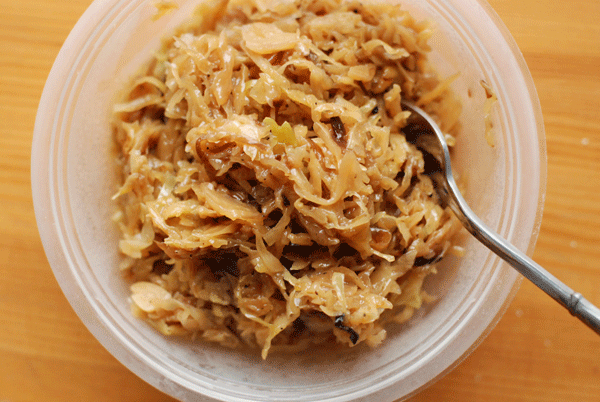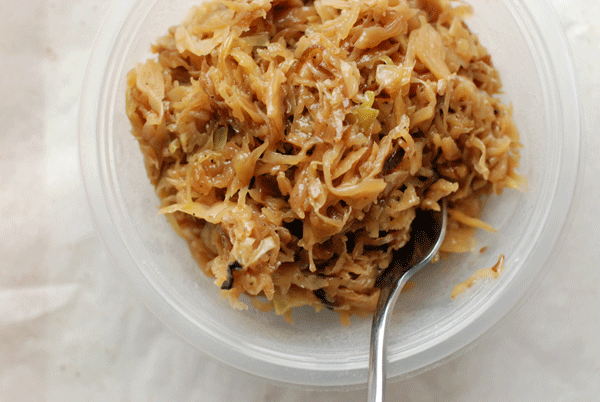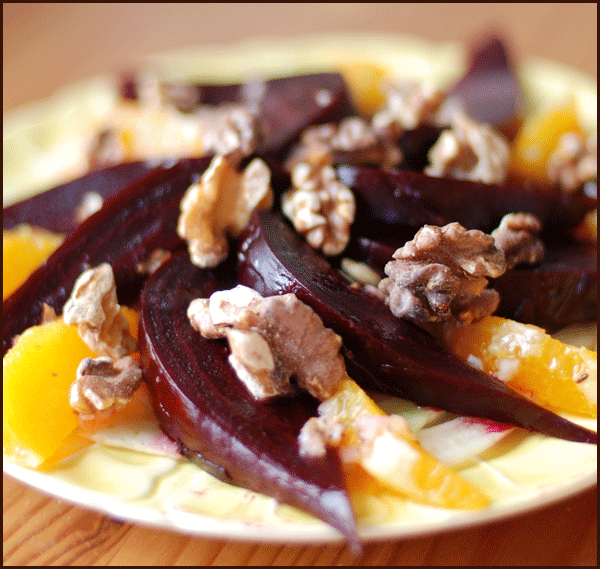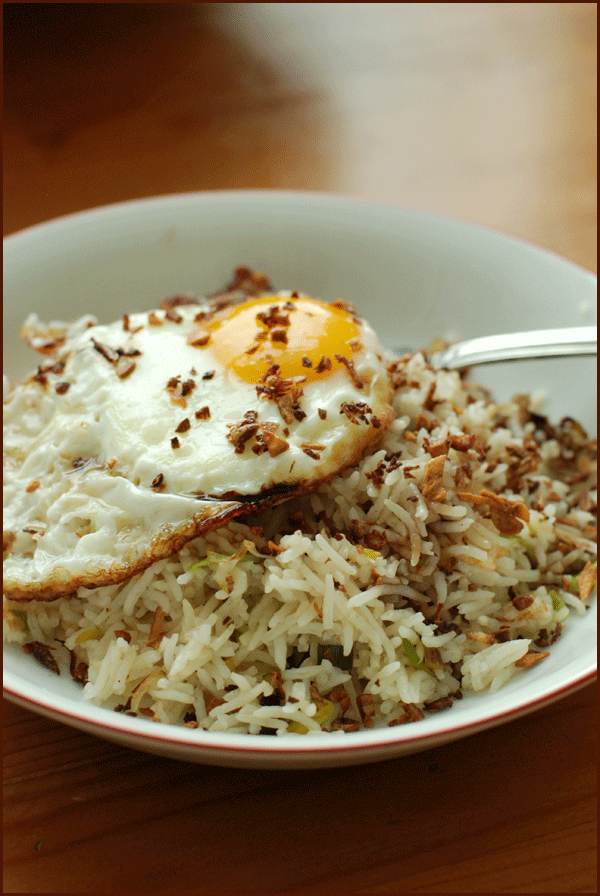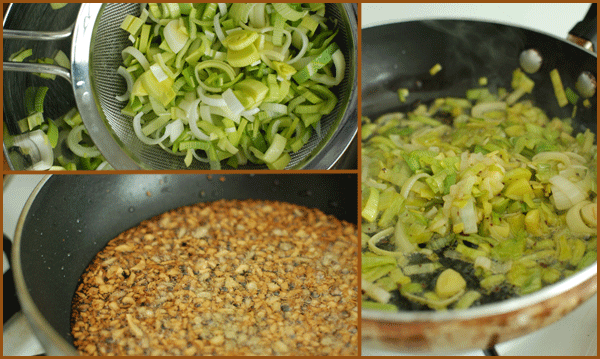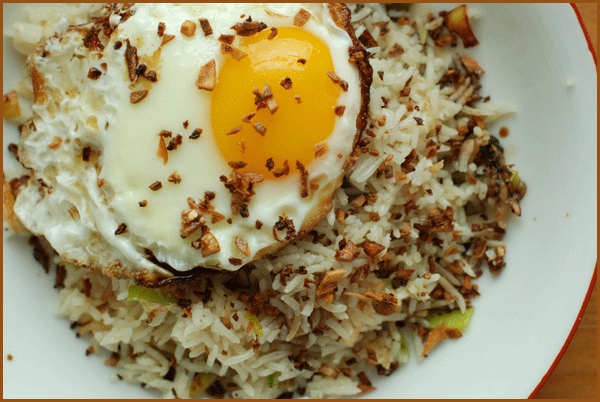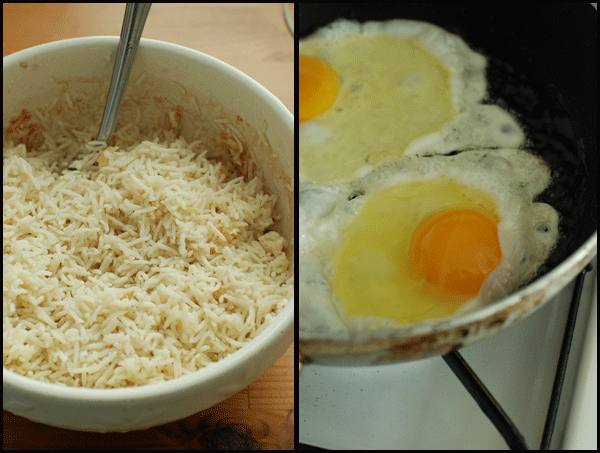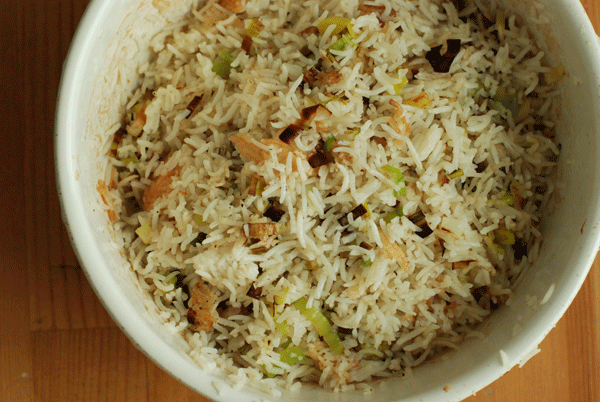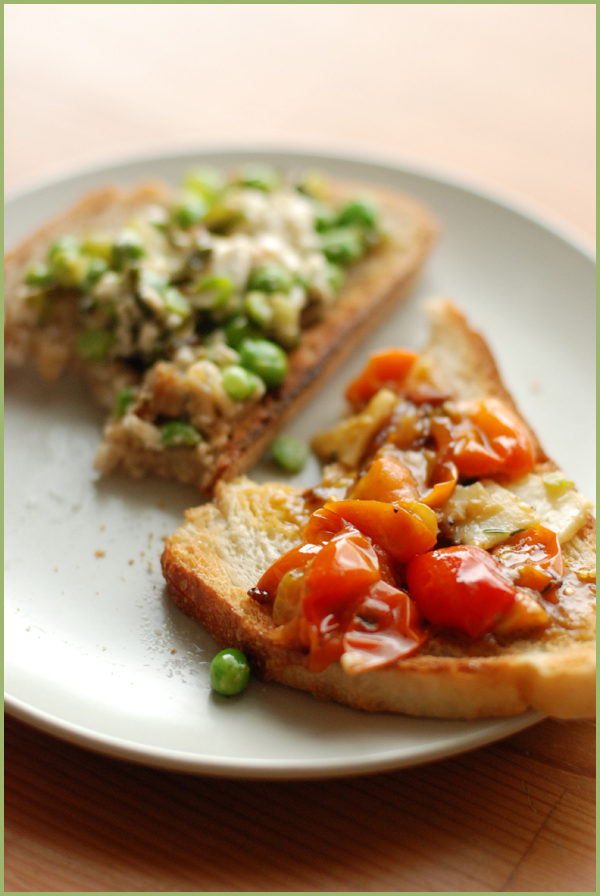 While I've usually thought of May as the true spring-to-summer transition month, these days, June seems to be taking on that role. One day the weather's as hot and sticky as boiling caramel, the next it's as cold and damp as the dish towel. But the erratic weather carries with it the promise of vegetable bounty. I may be mourning the end of asparagus season (how did I not realize until now that asparagus are the best vegetable on earth?) but I'm ramping up for my full-blown annual tomato courtship. And it's just tomatoes that roll around in June -- peas, snap and shelling varieties, have finally made their debut. Few things make me happier than bright green peas and tender, juicy tomatoes: there, I've exposed myself in all my nerdiness.
While I've usually thought of May as the true spring-to-summer transition month, these days, June seems to be taking on that role. One day the weather's as hot and sticky as boiling caramel, the next it's as cold and damp as the dish towel. But the erratic weather carries with it the promise of vegetable bounty. I may be mourning the end of asparagus season (how did I not realize until now that asparagus are the best vegetable on earth?) but I'm ramping up for my full-blown annual tomato courtship. And it's just tomatoes that roll around in June -- peas, snap and shelling varieties, have finally made their debut. Few things make me happier than bright green peas and tender, juicy tomatoes: there, I've exposed myself in all my nerdiness.
Over the past few years, I've settled into something of a routine when it comes to tomatoes and peas. I love tomatoes raw in salad, or simply sliced with a little flaky salt and olive oil. I get thrills from popping peas out of their pods and into blanching water, or tossing them with asparagus into pasta primavera. These bruschette are every bit a part of that routine. The tomato bruschetta occupies that middle ground between unadulterated raw tomato slices and a good, rich, labored tomato sauce, concentrating the flavor of the tomato without sacrificing its essential texture. Ditto the pea bruschetta, which celebrates the freshness of the peas' by adding complementary flavors, but retaining their plump firmness. I suppose by now it's pretty clear: I'm totally hooked on pea and tomato bruschette.
I've used a pretty simple method to make these bruschette. First, I saute some aromatics in butter (scallions with the peas, red onions with the tomato). I deglaze the pan a couple times with a bit of water, which reduces with the butter and onion to form a base for the vegetable. In goes either a handful of cherry tomatoes or a cup of peas, a bit of thyme, plus a pinch of salt and a grind of pepper. Five minutes of tossing and stirring later, I add just a bit of cheese (feta with the peas, sliced Pecorino Romano with the tomatoes) to tie it all together, and dump the whole panful on a piece of toasted sourdough (peas) or Italian (tomatoes) bread. Fin.
Naturally, you shouldn't feel tied to my specifications. Prefer a different bread? Happen to have yellow onions instead of green or red? Whatever. It'll still be delicious. And if you don't have pecorino on hand, which I usually don't, a thick grating of parmigiano reggiano would be great with the tomatoes.
If you're the type who likes a proper dinner -- one that requires a knife and fork and, oh, a table -- then, maybe, file this under "snack." But it makes a pretty darned good supper for the rest of us, and I've been known to whip these up for breakfast in the morning before heading off to work. Can you blame me?
Pea or Tomato Bruschette makes enough for 2 slices of bread; as you can see, I made 1 portion with peas and 1 with tomatoes, and the total was enough for dinner for 2.
2 tablespoons butter 2 scallions or half a red onion, chopped 1 cup of freshly-shelled peas, or 1/2 pint cherry tomatoes, halved 2 small sprigs thyme salt and pepper 1/3 cup feta or Pecorino Romano cheese a lemon wedge, for pea bruschette 2 slices bread olive oil for finishing, if you're feeling luxurious
Set a saute pan over medium heat, and add butter. when butter begins to bubble, add onion. Shake pan to distribute, and give a stir if you need to. When onion begins to turn golden at the edges, sprinkle a couple tablespoons water into the pan; it should pop and sizzle. Stir or shake pan to distribute water evenly, and continue cooking. As water evaporates, onions will begin to color some more. When that happens, add a couple more spoonfuls of water and stir. Repeat this step once more the next time onions color; by then, you should have a brownish onion mixture in the pan, that's more flavorful than you can imagine.
Add tomatoes or peas, leaves from the thyme sprigs, a pinch of salt, and a grind of the pepper mill. Shake the pan or give contents a stir to distribute tomatoes or peas among the onions. Leaving the heat at medium, cook for about 5 minutes, stirring regularly, to allow vegetables to soften.
When tomatoes are soft and juicy, or peas are bright green and perfectly bursting, turn off the heat and add the cheese. Stir the cheese into the vegetables. Meanwhile, pop the bread into the toaster. When bread is golden brown, set on a plate, top with bruschette, and finish with a swirl of olive oil. Eat. Now.

